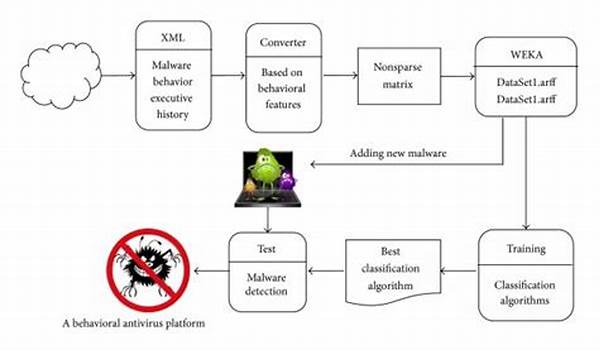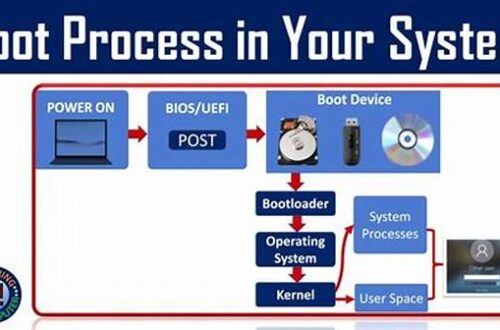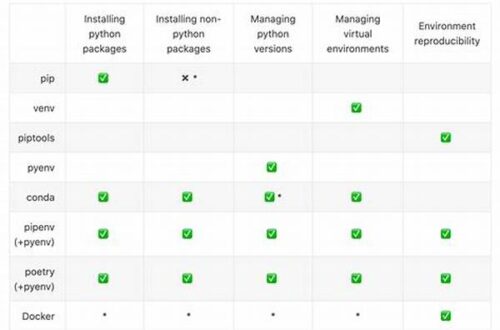In today’s increasingly digital world, the threat of malware looms large over both individual users and organizations. Cyberattacks have become more sophisticated, and traditional security measures often struggle to keep pace. This is where behavioral analysis for early malware detection comes into play. By observing and analyzing the behavior of files and applications in real-time, it offers a proactive approach to identifying and mitigating threats before they can cause harm. This methodology moves beyond signature-based detection, which relies on known malware signatures, to identify anomalies indicative of malicious behavior.
Read Now : Improve Software Response Time
The Importance of Early Detection
Behavioral analysis for early malware detection provides a vital layer of defense for computer systems. This technique can detect previously unknown threats, zero-day exploits, and advanced persistent threats (APTs) by identifying suspicious activity patterns rather than relying on known signatures. Additionally, early detection allows organizations to respond swiftly to potential threats, reducing the risk of data breaches, financial loss, and reputational damage. As cyber threats continue to evolve, the role of behavioral analysis becomes increasingly critical in maintaining the integrity and security of digital environments.
Through behavioral analysis, suspicious behavior is flagged, prompting further investigation. By utilizing advanced algorithms and machine learning, this method surpasses traditional reactive approaches, which often allow malware to go undetected until after damage is done. In essence, behavioral analysis for early malware detection significantly enhances security postures by allowing IT teams to stay one step ahead of cybercriminals. This proactive strategy not only protects valuable data but also builds trust among clients and stakeholders who rely on robust cybersecurity measures.
Characteristics of Behavioral Analysis
1. Proactive Monitoring: Unlike traditional methods, behavioral analysis proactively monitors systems for anomalies to ensure early malware detection.
2. Pattern Recognition: It uses sophisticated algorithms to recognize malicious patterns and activity, enabling effective early malware detection.
3. Adaptability: Behavioral analysis is adaptive, continuously learning from new malware behaviors to enhance detection accuracy.
4. Real-Time Analysis: It facilitates real-time analysis of files and systems, crucial for immediate early malware detection.
5. Comprehensive Coverage: Provides comprehensive coverage of threats by analyzing behaviors across various platforms and networks.
Implementation Strategies for Enhancing Security
Implementing behavioral analysis for early malware detection requires carefully planned strategies tailored to an organization’s needs. Firstly, investing in advanced threat intelligence solutions is crucial. These tools can gather and analyze vast amounts of data, allowing security teams to discern patterns indicative of malicious activity. Additionally, integrating machine learning algorithms into cybersecurity frameworks can significantly boost the accuracy and efficiency of behavioral analysis. These algorithms can adapt over time, improving their ability to detect evolving threats.
Furthermore, organizations should foster cooperation between IT departments and cybersecurity experts to ensure effective deployment. Continuous training and awareness programs can empower employees to recognize potential threats, thus lowering the risk of human error. By adopting a holistic approach that combines technology with education, organizations can create an agile security environment. Moreover, regular assessments and audits of security processes are essential to maintain effectiveness and adapt to the ever-changing threat landscape. Incorporating behavioral analysis for early malware detection into these strategies significantly strengthens overall cybersecurity resilience.
Read Now : Top Silent Switches For Gamers
Key Benefits of Behavioral Analysis
Behavioral analysis for early malware detection offers a multitude of benefits that enhance organizational security and resilience. It not only supports comprehensive threat identification but also aids in efficient resource allocation by focusing efforts on genuine threats. This, in turn, reduces false positives that can exhaust security teams. Moreover, because it continuously learns and adapts, behavioral analysis remains effective against new and emerging malware types. Thereby, it addresses the fundamental challenge of remaining relevant in the face of rapidly evolving threats.
Another key advantage is its ability to protect against insider threats. While traditional security measures might overlook internal actors, behavioral analysis scrutinizes all activities, identifying harmful behavior regardless of its origin. This ensures that threats originating from within the organization are quickly mitigated. Furthermore, the insights gained from behavioral analysis can aid in building a stronger security architecture by highlighting vulnerabilities within systems and processes. By transforming threat detection from a reactive to a proactive strategy, businesses can significantly bolster their defenses against cyberattacks.
Challenges and Considerations
While the benefits of behavioral analysis for early malware detection are clear, several challenges need addressing to fully leverage its potential. One significant hurdle is the potential for privacy concerns, as monitoring behaviors might inadvertently infringe on user privacy. Striking a balance between privacy and security is vital, requiring transparent policies and controls. Additionally, implementing such a system necessitates substantial investment in technology and expertise, which could be challenging for smaller organizations with limited resources.
Organizations must also ensure that their behavioral analysis systems are continuously updated and refined to cope with new threats. This requires ongoing training and a commitment to evolving alongside the cyber threat landscape. Furthermore, false negatives—instances where malicious activity goes unflagged—remain a persistent challenge. These instances necessitate robust testing and quality assurance processes to minimize the risk of undetected threats. Consequently, while behavioral analysis for early malware detection is a powerful tool, its successful deployment demands careful planning and continuous improvement.
Conclusion
In conclusion, behavioral analysis for early malware detection represents a paradigm shift in cybersecurity strategies. By prioritizing proactive threat identification and real-time monitoring, it offers robust protection against a myriad of cyber threats. This approach not only aids in detecting known and unknown malware but also enhances an organization’s overall security posture. As the digital landscape continues to expand, integrating behavioral analysis into cybersecurity frameworks becomes increasingly essential for safeguarding data and maintaining stakeholder trust.
Moreover, while challenges such as privacy concerns and resource constraints exist, the strategic implementation of behavioral analysis can mitigate these issues. Through a combination of advanced technology, collaboration among departments, and continuous adaptation, organizations can harness the full potential of behavioral analysis for early malware detection. Ultimately, this approach empowers businesses to navigate the complexities of modern cybersecurity, ensuring resilience in the face of ever-evolving threats.





